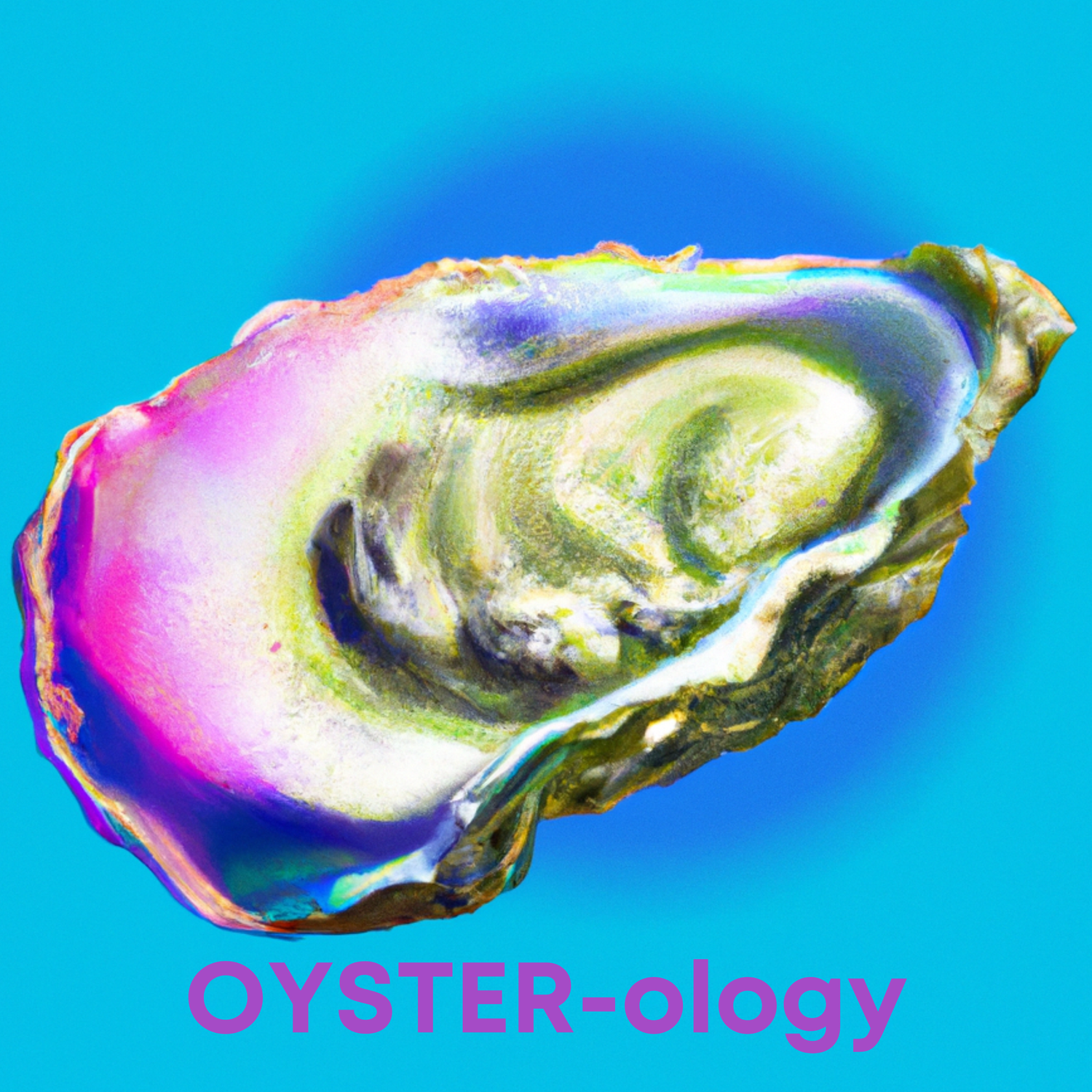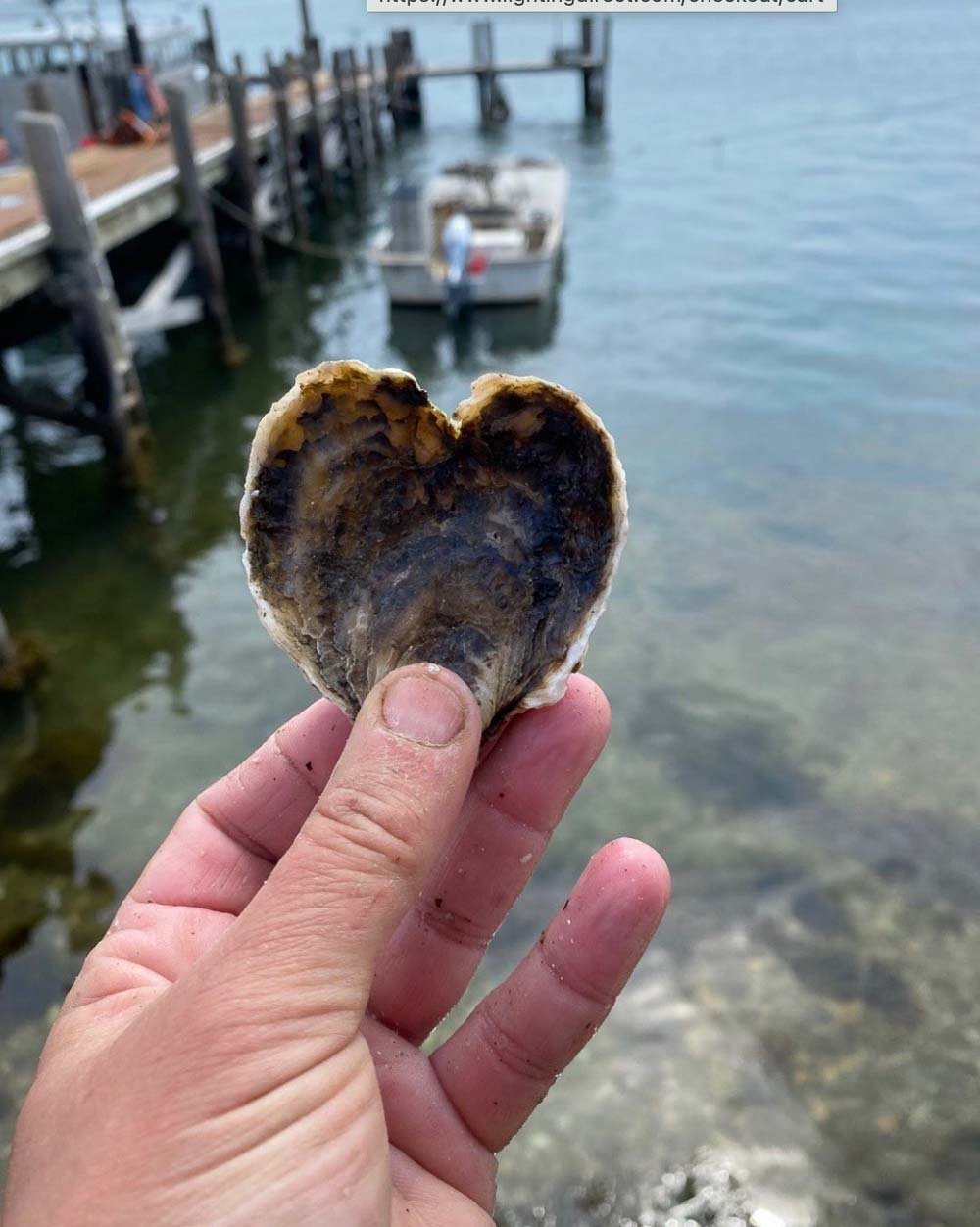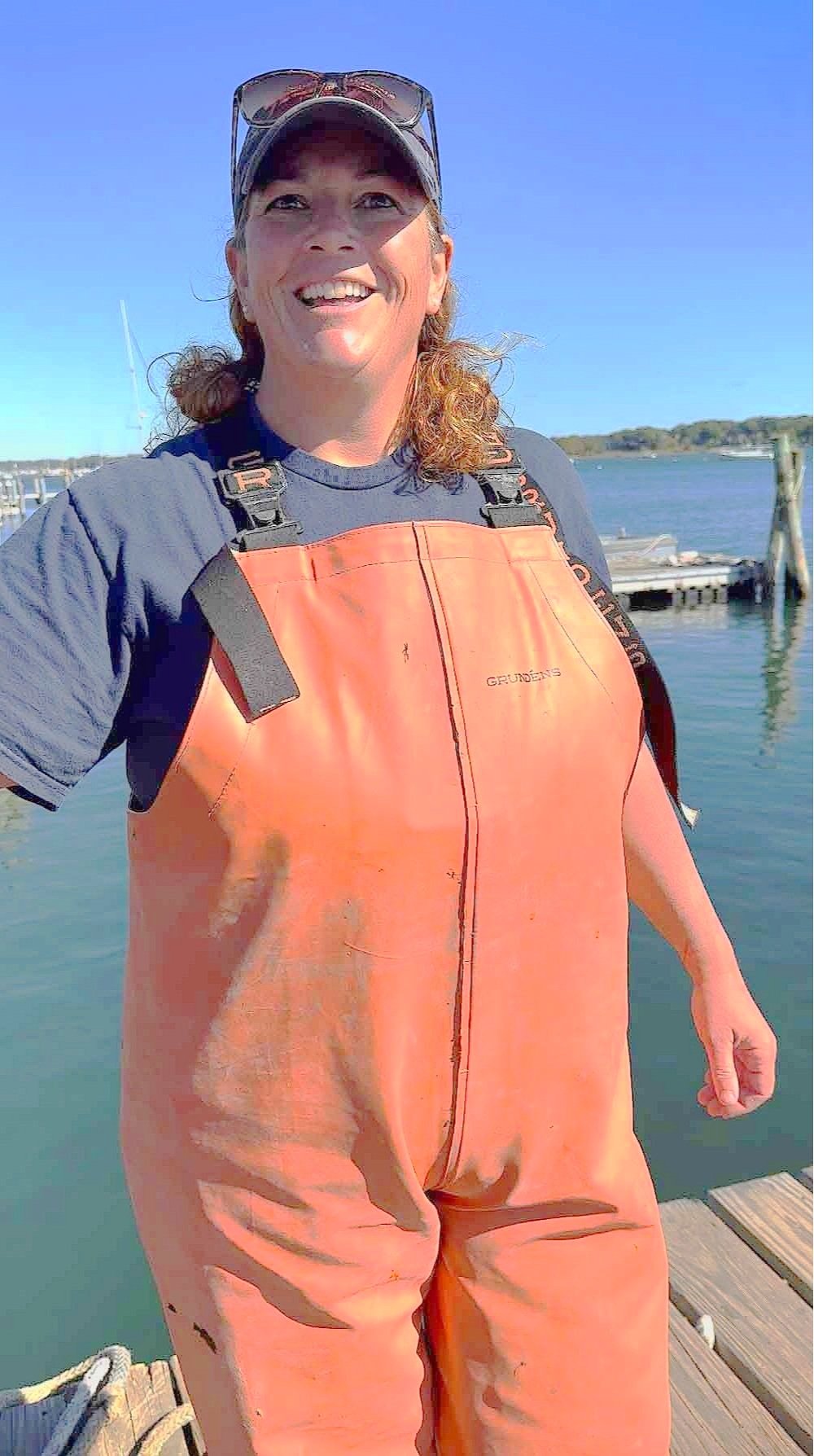Stonington Farms Shellfish - Paying it Forward with Love & Oysters
/
The story of Stonington Farms Shellfish in Mystic CT is one of love, loss and love again. Of abuse and recovery. And of creating futures for people who otherwise wouldn't have them. But mostly, it’s a story of passion. And ridiculously good oysters.
Kris Simonds grew up on the water and was attached to the sea in some fashion for most of his life. But never did he dream of growing oysters for a living. A master woodworker and builder, he instead started a company focusing on kitchens and baths and made a good name for himself in and around Mystic Connecticut. It was there that he met a woman with similar values and interests and together they built a plan, started a family and had the life they each had dreamed of. They lived in the family house where she had lived, on the edge of sparkling Mystic Harbor, an idyllic bay famous for sailing, fishing and, of course, oysters. Their dream was to build something lasting that would involve the entire family. So they decided to learn to farm oysters, with an eye toward finding a farm and starting an exciting new undertaking together as a family which one day their neurodivergent son, Jake could continue to run on his own into the future
But life threw Kris a wicked curveball when his wife passed away, leaving him and their eight year old son devastated and alone. Though his life was shattered, Kris’s love for the family they had created kept him going. He nurtured Jake as both mother and father; a team of two with a ghost by their side. And he continued with their dream, working with Stonington Farms Shellfish – a small family oyster farm founded in 1998 by Kevin & Lori Blados in beautiful Mystic, CT.
Beth was a twenty year domestic abuse survivor and mother of four. Finally managing to get out of the highly dysfunctional marriage she had been trapped in, she leveraged the trauma of her own life toward helping others in areas of special education and behavior intervention. She did classroom work and in-home visits, trying to help those in difficult situations with little place to turn. But mostly, as a recovering victim of unrelenting abuse, she focused her attention on protecting and raising her four kids from the broken home.
It was in her classroom that Beth first met Kris’ son Jake and they bonded instantly, with Jake soon saying he wished she could be his mother. It wasn’t long before Beth and Kris would meet, first in the parent/teacher classroom and then at Kris’ farm, where one of Beth's own neurodivergent kids worked part time. “I had an unstoppable crush on Kris,” said Beth. “I giggled like a schoolgirl whenever he was around.” It wasn’t long before the kids asked her to help out at the farm, which she instantly loved. Both cycling out of bad marriages, Beth and Kris bonded quickly as they worked together on the farm, surrounded by their respective kids. She even moved into a small apartment at Kris’ house with her daughter to escape her ex-husband. Their love blossomed, with Beth dedicating more and more time to the farm, the kids and Kris’ kitchen and bath business. They married in August of 2023 — Jake’s wish was granted and the two families blended into one. A veritable “Brady Bunch” of Bivalves….
To say the farm is Kris and Beth Simonds’ home today would be an understatement, since the farm is literally beneath their house. Driving down the private lane the oyster operation is immediately visible, with boats, equipment and the usual signs of active aquaculture. Sitting on tall pilings, the house creates a natural shelter for much of the land-based aspects of the farm, including their own upweller nursery system on the water’s edge where their baby bivalves begin their journey as Stonington oysters. From their home elevated above all of this they overlook their 100 acres of watery beds and work them tenaciously with business partner and Beth’s bestie, Dana, along with Jake and farm hand Dillon,
But Kris and Beth’s dream is to do more than just grow oysters. They are driven by a powerful desire to give back and pay it forward, each at the same time. Their mission: to use the farm as a vehicle for people often closed away from mainstream society – neurodivergent kids, impoverished minorities, young girls from broken homes – to gain a sense of opportunity. In addition to teaching kids about aquaculture, Kris and Beth are actively involved in programs to open the natural world to people who have had such little access to it and create new opportunities. Participating with groups like The Mavens Program, they are exposing young women to the option of a water-based industry and empowering them to chase any dream. “We want to show them that they can do things, learn things and have a future that excites them, Beth explains energetically. “Here they’ll discover the world of aquaculture, but they'll also get their voting registrations, licenses and learn life-saving techniques like CPR.” The goal is to help create a generational shift for entire families “And look around,’ Beth spreads her arms wide, “How therapeutic is this environment? I doesn’t get any better!”
“Let’s get out and farm some oysters,” Kris said as he tossed me a pair of tall rubber deck boots. Motoring across the sparkling bay toward some beds, Kris pointed out numerous houses and buildings he’s worked on as we reached a submerged bed and drifted to a stop. To watch Kris and Beth work is to watch a well-trained team make something very hard look really easy. Kris pulls the skiff up and without instructions Beth connects a dredge to a davit crane mounted on deck and drops it down as Kris throttles up. They both know instinctively when the dredge is full – that little lag in boat speed and slight heeling to port. Theirs is an old-school Connecticut oystering style, dating back generations which, to an newbie like me, feels like a gift of time travel to days when oyster farming was the lifeblood of the bay.
That is not to say that Stonington Oyster Farm ignores modern techniques of oyster aquaculture. We approached another bed and raised a rack of grow out baskets festooned with seaweed and filled with oysters. Beth pulled a bag from the rack, opened the end and cascaded the stainless work table with pristine oysters, glistening in the sun. Each of the shells were nearly identical in appearance, about and inch and a half long and slightly striated beige and brown. Gorgeous.
The beauty of Stonington Farms’ oysters is their multidimensional background. Their mollusks are neither grown just on the bottom of the bay nor only in floating baskets, but rather both. They are regularly moved around to maximize growth and take full advantage of the bounty of the bay’s nutrients and temperatures. Like any experts, Beth and Kris make their work sound straightforward, but the devil is in the details. Working seven days a week on the schedule of the tides, the small Stonington crew’s attention to the demands of the silent bivalves is constant, with every oyster being directly handled by one of them – from lipping, sorting, culling, washing, planting, and finally package for sale – as many as 45 times by the time they reach one’s lips. No easy task when one considers they are already working six days a week running their kitchen remodeling businesses and managing a family. “We really don't sleep much,” Beth said. But her smile beams as she holds up an oyster shaped like a heart – they won’t take it because it represents their operation and what it means to them.
We continued across the bay, approaching a red brick building with a wooden dock extending out into the water. He pulled the boat alongside effortlessly and Beth looped it to a piling. Stonington Farms is a member of the Noank Aquaculture Cooperative, a small collection of oyster farmers who together lease land-based space for processing and shipping their products. “This is where you lift the bags, Kris nodded toward the dock, a patchwork of weathered wood and nails somehow holding it all together. I looked up at the dock’s edge hovering above the side of the skiff. “Looks easy from this height,” Kris said as he stepped from the boat gunwales up onto the steel sorting table mounted in the boat and then up onto the dock. “But picture a three foot hoist of bags and baskets when the tide is out.” From deck to dock was a span of more than five feet. “After a full load of lifting oysters from the deck to the dock, sometimes I can barely lift my arms,” Beth added.
At Stonington they focus on three basic sizes of their Eastern oyster (c. virginica), each with their own nuances that make them, well, fantastic. The Stoningtons are their premium cocktail size halfshells popular with the majority of fans while their Murphy Points are larger, meatier and even more robust. A gorgeous balance between the other two is the Prom Queen, medium sized with a deep cup and an elegantly rounded, teardrop shell striped like a zebra.
Once shucked — as Kris was happy to demonstrate — each oyster was remarkable on the palate. Inside the perfect cup, the glistening oyster floats in its own iridescent pool of colorless liquor. It’s a buxom lump of meat, so fresh and firm that the adductor muscle is almost crunchy. The taste is clean and crisp; a bracing attack of crystalline brine, evoking memories of being a kid at the beach getting gleefully slapped in the face by a salty wave. Such lively flavor was followed by a sweet, herbaceous party in my mouth. The silky meat developed and changed as I chewed - first melon, then lettuce and a hint of minerals — until ending with a long, luscious aftertaste of clean, crisp cucumber. At Kris and Beth’s insistence I happily confirmed – and reconfirmed several times – the thrilling flavor experience as he shucked more and more. And suddenly I understood Kris and Beth’s passion, pain, recovery and love that brought about those amazing oysters. And sitting at the edge of the boat slip, oysters freshly plucked from the water beyond, it was hard for me to recall having enjoyed better ones.
Stoninginton Farms Shellfish, Mystic CT






















